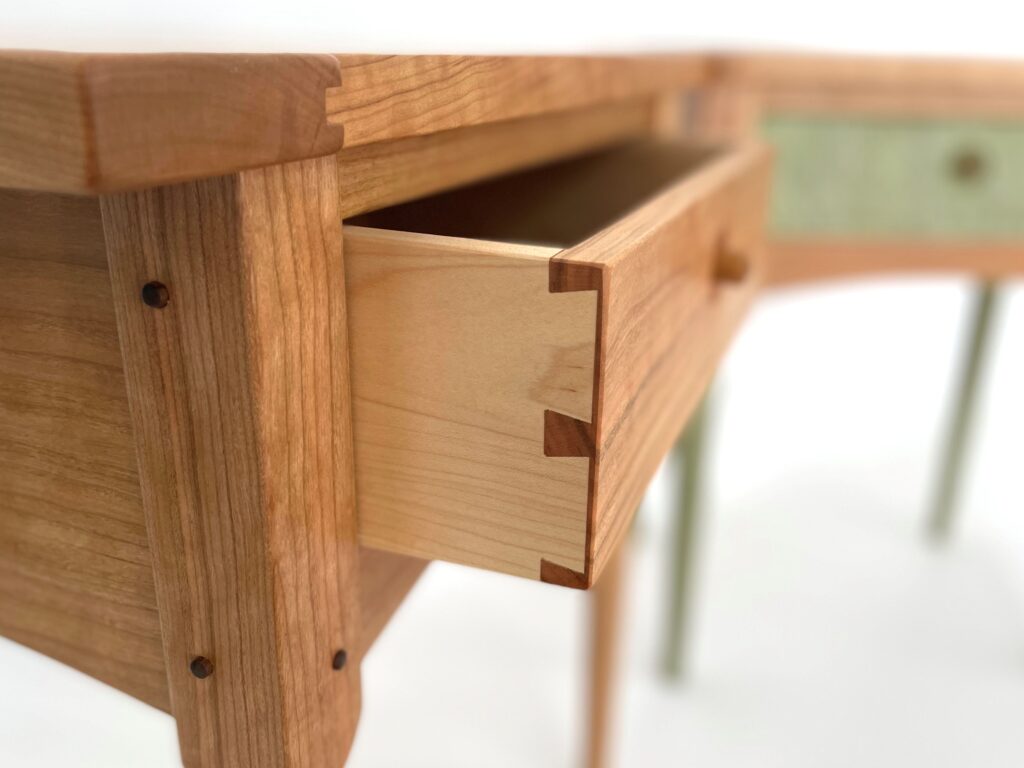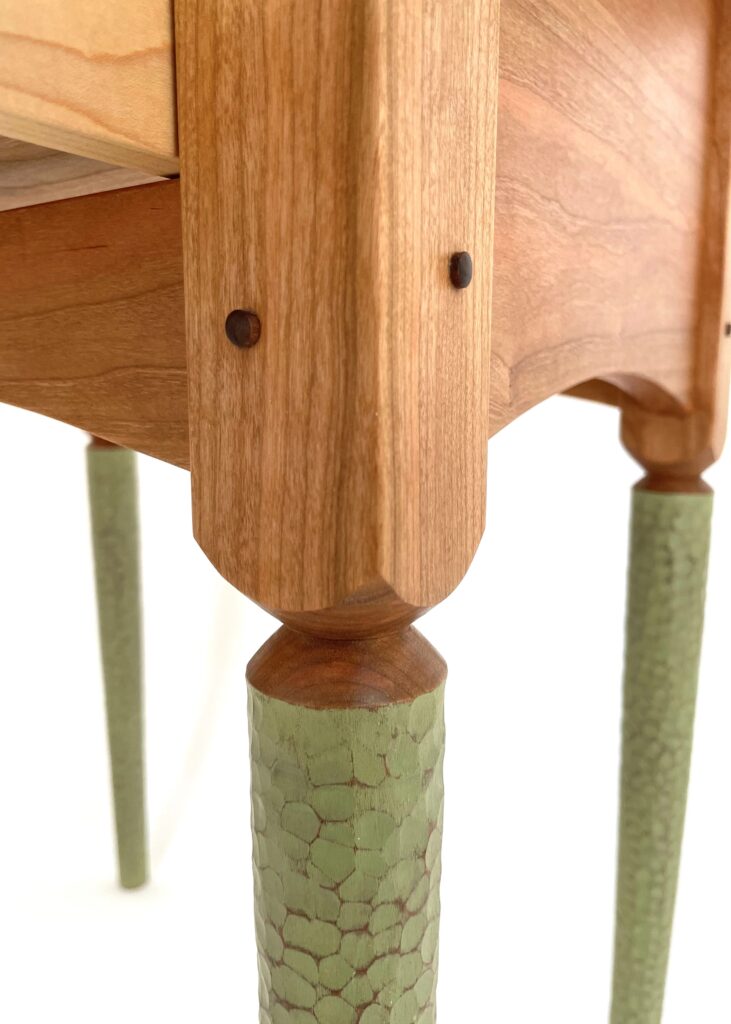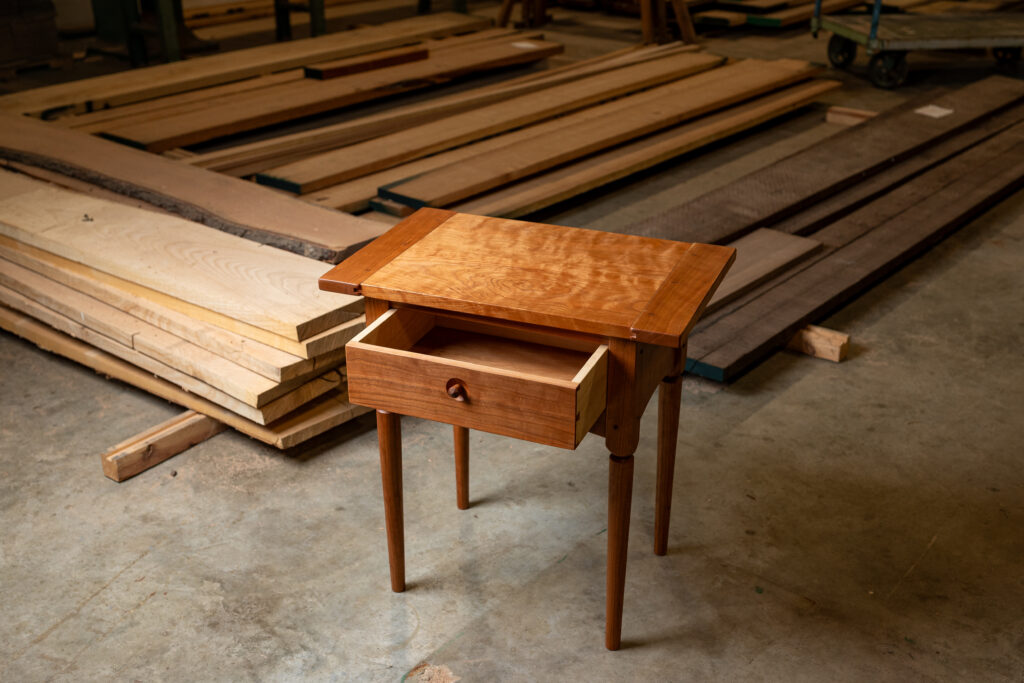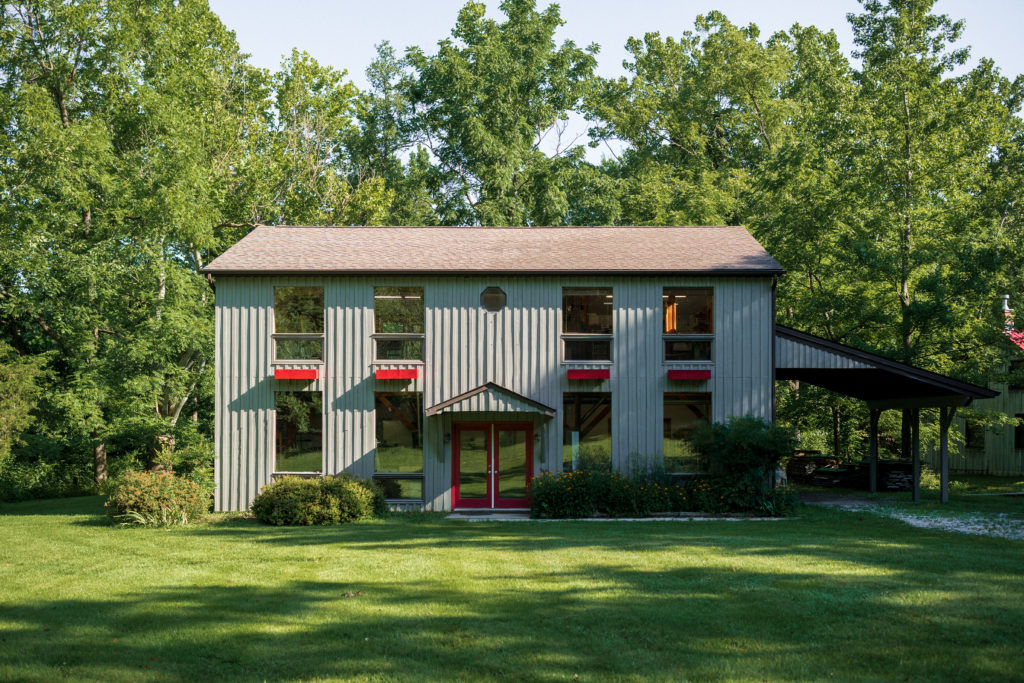Class Description:
Building on the techniques we learned in Foundations of Furniture Making, this class will explore delicate and exacting joinery while building a carefully proportioned side table. The details in this piece highlight the makers hand at every corner.
So many dovetails…
Dovetails are all over this piece – from the socket dovetail that joins the legs above the drawer, to the through dovetails at the drawer back and the half blind dovetails at the drawer front. There are so many ways to cut this joint and we’ll look at them all. One method doesn’t work for everyone, so I’ll encourage you to look for ways that makes sense to your hands, your head and the tooling you have available.
Engineering with wood…
One of my favorite joints – the breadboard end – tells a story of craftsmanship and consideration. Tenons cut on the table top join to breadboards with pins and wedges. The joint is engineered to hold tight and allow movement at the same time. Glue is used sparingly in assembly and the draw bored pins do the heavy lifting.
Fitting Drawers
Cutting fine dovetails is great, but you need a place for them to go. There’s nothing better than a finely fitted drawer that runs on wood runners. We’ll dive into a traditional approach to fitting a drawer that leads to silky smooth operation, no matter the time of year.
Shaker Style
Drawing from examples of Shaker pieces, turned and tapered legs give us a chance to explore turning furniture parts. Transitions from square to round take a bit of practice, so we’ll spend a day at the lathe tuning in our finished cuts. Delicately turned pulls give us a chance to shape graceful small parts.
(photos: turning square to round transition, turning pulls, tapping in pegs)
Prerequisite: I’d highly encourage taking my Foundations of Furniture Making course before this one. In that class, we really have time to dive into knowledge of wood as a building material – and the exacting methods of building fine furniture. The ability to make a mortise and tenon joint and accomplish exacting layout is essential to your success in this class. A basic comfort level with the tablesaw, bandsaw and router are essential. Coming into this higher level class without a solid background in the fundamentals of woodworking may lead to a difficult experience.
Required Tools:
Dovetail Saw
Marking Gauge
Combination square
Mallet
Basic set of chisels (3/8”, ½”, ¾”)
Layout knife
Rabbet block plane or shoulder plane
Card Scraper
Additional tools – not necessary, but if you have a favorite:
Block plane
Cordless drill
Hammer – for tapping in pins
Turning tools – Spindle roughing gouge, skew chisel, beading and parting tool
Material costs and daily lunches are always included in the course fee at Pine Croft.






